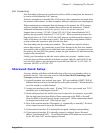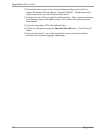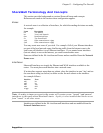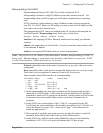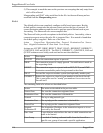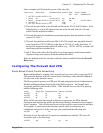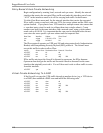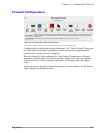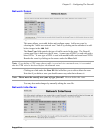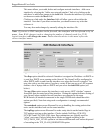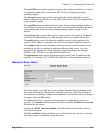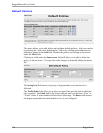
RuggedRouter® User Guide
Policy Based Virtual Private Networking
Begin configuration by creating local, network and vpn zones. Identify the network
interface that carries the encrypted IPsec traffic and make this interface part of zone
“ANY” in the interfaces menu as it will be carrying both traffic for both zones.
Visit the Zone Hosts menu and, for the network interface that carries the encrypted
IPsec traffic, create a zone host with zone VPN, the correct subnet and the IPsec zone
option checked. If you plan to have VPN tunnels to multiple remote sites ensure that
a zone host entry exists for each (or collapse them into a single subnet). Create
another zone host for the same interface with a network zone, using a wider subnet
mask such as 0.0.0.0/0. It is important that the vpn zone be declared before the net
zone since the more specific vpn zone subnet must be inspected first.
Host Zone Interface Subnet IPsec Zone?
vpn w1ppp 192.168.1.0/24 Yes
net w1ppp 0.0.0.0/0 No
The IPsec protocol operates on UDP port 500 and using protocols ah (Authentication
Header) and Encapsulating Security Payload (ESP) protocols. The firewall must
accept this traffic in order to allow IPsec.
Action Source-Zone Destination-Zone Protocol Dest-Port
ACCEPT net fw ah
ACCEPT net fw esp
ACCEPT net fw udp 500
IPSec traffic arriving at the firewall is directed to openswan, the IPSec daemon.
Openswan then decrypts the traffic and forwards it back to shorewall on the same
interface that originally received it. You will also need a rule to allow traffic to enter
from this interface.
ACCEPT vpn loc
Virtual Private Networking To A DMZ
If the firewall is to pass the VPN traffic through to another device (e.g. a VPN device
in a DMZ) then establish a DMZ zone and install the following rules.
ACCEPT net dmz ah
ACCEPT net dmz esp
ACCEPT net dmz udp 500
ACCEPT dmz net ah
ACCEPT dmz net esp
ACCEPT dmz net udp 500
118 RuggedCom




